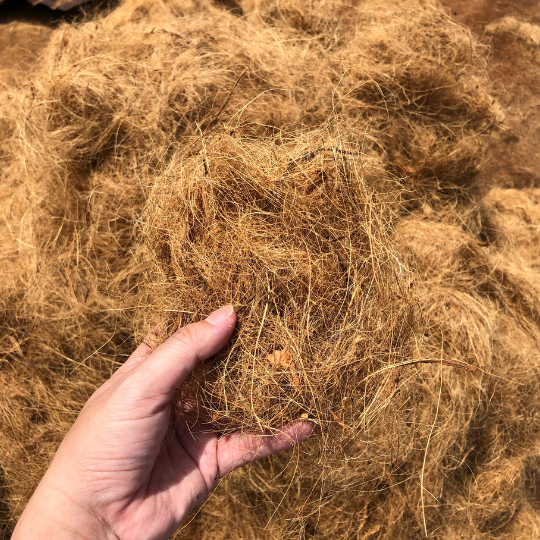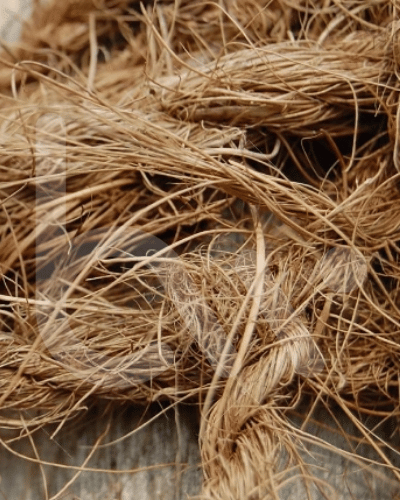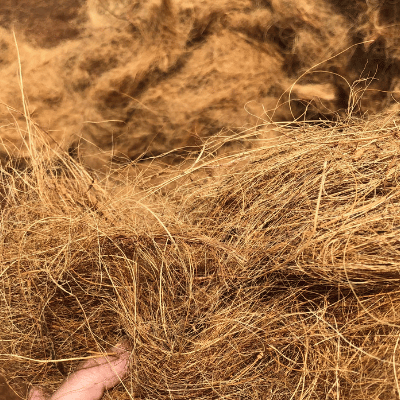
Discover the ancient practice of using coco fiber for plants, a sustainable and eco-friendly alternative that promotes healthy growth. Dating back centuries, this natural material has been favored for its water retention and aeration properties, benefiting plant roots. By incorporating coco fiber into your gardening routine, you can enhance soil structure, reduce water usage, and minimize environmental impact. Join the movement towards greener gardening with this versatile and biodegradable solution.
Benefits of Coco Fiber
Enhancing Plant Growth
Coco fiber enhances plant growth by improving soil structure and water retention, providing a conducive environment for roots to thrive. It also promotes aeration, preventing root rot and promoting healthy root development.
The fibrous nature of coco fiber helps in preventing soil compaction, allowing roots to spread easily and absorb nutrients efficiently. This leads to increased nutrient uptake and overall plant health, resulting in vigorous growth and abundant blooms.
Nutritional Advantages
Coco fiber is a rich source of potassium, which is essential for flowering and fruiting plants. It also contains natural enzymes that aid in breaking down nutrients for easier absorption by plants, ensuring they receive the necessary nourishment for optimal growth.
Environmental Benefits
Using coco fiber as a growing medium is environmentally friendly as it is renewable and biodegradable, reducing the carbon footprint of gardening practices. It also helps in reducing waste by utilizing a byproduct that would otherwise go to landfill.

Using Coco Fiber for Plants
Potting and Mounting Techniques
Coconut coir, also known as coco fiber, is a versatile growing medium that can be used for potting and mounting plants. When potting with coco fiber, ensure proper drainage by mixing it with perlite or sand. For mounting techniques, wrap the roots of orchids or epiphytes in moistened coco coir.
- Mix coco fiber with perlite for better drainage
- Wrap plant roots in moistened coco fiber for mounting
Seed Starting Methods
In seed starting, coco fiber provides a sterile environment ideal for germination. Create seedling mixtures by combining coir with vermiculite and compost. The high-water retention of coco coir promotes healthy seedling growth.
- Ideal sterile environment for seed germination
- Combine coir with vermiculite and compost for seedling mixtures
Hydroponics Applications
Coco fiber is widely used in hydroponics due to its excellent water retention capabilities. In hydroponic systems, coco fiber acts as a buffered medium for nutrient solutions. Its pH neutrality ensures optimal nutrient uptake by plants.
- Excellent water retention suitable for hydroponics
- Acts as a buffered medium with pH neutrality for optimal plant growth
Selecting Quality Coco Fiber
Types of Coir Products
Coco fiber products come in various forms, including finer coconut coir and coir fiber pith. These products are derived from the long coconut husk fiber and natural coconut fiber, offering versatility for different gardening needs.
- Finer coco fiber: Ideal for seed starting and delicate plants
- Coir fiber pith: Suitable for improving soil structure and water retention
Criteria for Quality Assessment
When assessing coco fiber quality, look for products from a good coco fiber maker. Ensure the coir medium has enough fibers to provide adequate support for plant growth. Check for coco fiber that is free from contaminants and has a neutral pH level.
- Good coco fiber maker: Ensures high-quality processing methods
- Enough coir medium: Provides sufficient aeration and drainage for plants
Considerations for Best Use
To make the most of coco fiber, consider its water retention capabilities and biodegradability. Use coco fiber as a sustainable alternative to peat moss, promoting eco-friendly gardening practices while benefiting plant health.

Practical Tips for Coir Use
Soil Enhancement Techniques
When incorporating coir into soil, ensure to mix it thoroughly to improve aeration and drainage. The fibrous texture of coir helps in breaking up compacted soil, enhancing root growth. To enhance soil fertility, consider adding compost along with coir. This combination provides a balanced nutrient profile for plants, promoting healthy growth. Moreover, coir aids in retaining moisture, reducing the frequency of watering.
Water Retention Strategies
Coir’s ability to retain water makes it an excellent choice for maintaining optimal moisture levels in the soil. By using coir, you can reduce water usage while ensuring that plants receive adequate hydration. This feature is particularly beneficial for plants sensitive to fluctuations in moisture levels.
To maximize water retention, create a coir layer on top of the soil. This method prevents rapid evaporation and helps in maintaining consistent moisture levels. Consider mixing coir with vermiculite or perlite for improved water retention capacity.
Mixing with Other Mediums
Incorporating coir with other mediums such as perlite or peat moss enhances the overall quality of the growing medium. The combination of coir with these materials improves aeration, drainage, and nutrient retention in the soil. Experiment with different ratios to find the ideal mix for your plants.
Utilizing coir alongside vermicompost can further enrich the soil with beneficial microbes and nutrients. This blend creates a fertile environment that supports robust plant growth and overall health.
Closing Thoughts
Incorporating coconut coir into your gardening routine can revolutionize the way you nurture your plants. From its eco-friendly nature to its exceptional water retention capabilities, coconut coir offers a myriad of benefits that can elevate your gardening experience. By selecting quality coconut coir and implementing practical tips for its use, you are not only enhancing plant growth but also contributing to a sustainable environment.
Take the first step today and explore the wonders of coconut coir in your gardening endeavors. Your plants will thank you for the enriched soil, improved moisture retention, and overall healthier growing conditions. Embrace this natural alternative with confidence and watch your garden flourish like never before.

Frequently Asked Questions
How can coco fiber benefit plants?
Coco fiber benefits plants by promoting healthy root growth, improving soil aeration and moisture retention, and reducing the need for frequent watering. It is a sustainable alternative to peat moss with excellent nutrient retention properties.
Is coco fiber suitable for all types of plants?
Yes, coco fiber is versatile and suitable for a wide range of plants including vegetables, herbs, flowers, and even succulents. Its neutral pH level makes it an ideal growing medium that can be used in various gardening applications.
How do I select quality coco fiber for my plants?
When selecting coco fiber, look for products labeled as “100% coco fiber” without added chemicals or synthetic materials. Opt for well-packaged, high-quality coir that is finely ground and free from impurities to ensure optimal plant growth.
Can I reuse coco fiber in gardening?
Yes, you can reuse coco fiber multiple times by composting it after each use. Make sure to rinse the coir thoroughly to remove any salt buildup before reusing it. This eco-friendly practice not only saves money but also reduces waste.
Are there any specific tips for using coconut coir in gardening?
To maximize the benefits of coco fiber, pre-soak it in water to expand before use, mix it with other soil amendments based on your plant’s needs, and monitor moisture levels regularly. Using coconut coir as part of a well-balanced soil mix can enhance plant growth and health.
In conclusion, if you are eager to delve deeper into the details of coir products, feel free to explore our website at https://cocopeatcocofiberaustralia.com/. Additionally, for direct and instant connection with our team, you can reach us through the following WhatsApp link https://wa.me/61412773364. We look forward to providing you with the information and assistance you need.
